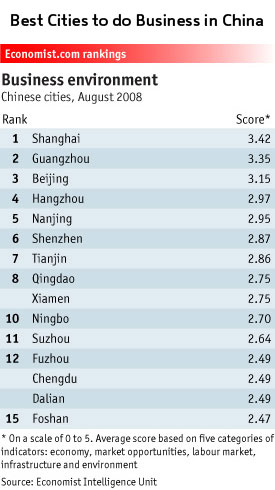Proven, controversial, and new approaches are part of an effective asset management program. Proper planning and control of spare parts inventory is a critical component of an effective asset management program. If the right parts are not on hand when needed for routine maintenance or repairs, downtime is prolonged. If too many parts are on hand, the enterprise absorbs excessive costs and the overhead of carrying the inventory. There are tried and true strategies to manage spare parts in support of effective asset management, along with some that can be considered questionable, and a variety of new and innovative practices. Advanced enterprise asset management (EAM) solutions support the proper implementation of these capabilities. Following are examples of each. Proven strategies
Item search. It can be frustrating to a maintenance planner who is not familiar with item numbers to locate the appropriate part in a computer system. Nouns and qualifiers are a way of simplifying a search. A noun is a simple, meaningful name for the item, for example "pump." The qualifier adds more detail, such as "hydraulic." A search on this combination will bring up all hydraulic pumps in the stock item master file. An assortment of captions and a detailed item description can provide an increasingly narrowed search that considers make, model, size, formulation, capacity, etc. If the part can be substituted with an alternate or equivalent part, that reference also should be stored in the stock record. ABC and XYZ analyses. The generally accepted 80:20 rule illustrates that approximately 80 percent of any storeroom's volume is associated with only 20 percent of the items in inventory. It is important to pay extra attention to that critical 20 percent. ABC and XYZ codes are commonly used to identify those parts. The codes are assigned based on value or quantity of stock movement, and each code will have an associated "upper limit." Highest value parts, for example those that cost more than $5000 each, can be assigned the ABC code of "A," and fastest moving parts can be assigned an XYZ code of "X." Automatic replenishment. Automating the thought process related to reorders has generated proven savings. Suggested reorder functionality creates requisitions based on reorder points (ROP) and reorder quantities (ROQ) that are stored in the inventory record. Once inventory levels for a part fall below the reorder point threshold, a suggested reorder is placed for the reorder quantity, which in turn creates a requisition. This saves time and prevents the delays and errors that can occur with manual purchasing processes. When a simple ROQ value is not enough, an economic order quantity (EOQ) algorithm can be used to calculate the right quantity of a spare part to purchase when replenishment is needed. The EOQ can consider volume discounts, the cost of placing an order, carrying costs, and other factors. Vendor service levels. Capturing supplier service level data within the inventory record helps bring to light the most efficient, dependable, and cost-effective vendors. Preferred suppliers can be identified based on historical lead times, pricing, quality, number of short- or over-shipments, how often goods are received damaged, frequency of backorders, and other criteria. Preference can be given to these vendors in the procurement process. Where used. A view of where a part is used, for example on which assets a certain ball bearing is installed, provides benefits to both the plant floor and storeroom. This view enables inventory personnel to understand how extensively a part is used throughout the operation, and helps the maintenance planners to determine the item number and quantity of parts installed on an asset. Multi-stores capability. Taking where-used one step further, a multi-stores capability enables an enterprise-wide view of spare parts inventory that is stored at more than one warehouse or off site by a third party. In a multi-plant environment or when maintenance departments are distributed, visibility into inventory at the various storerooms permits monitoring of parts availability and service-level agreements across the enterprise as a whole or on an individual basis. Controversial methods
Just-in-time (JIT) replenishment is a popular but sometimes controversial concept of storing minimal inventory in the warehouse and replenishing it only when and as needed╛just in time. Although enabling significant carrying cost savings, there are risks involved. The best replenishment formulas cannot predict an emergency breakdown, a vendor going out of business, a carrier going on strike, or a sudden shortage of raw materials. Being too conservative in stocking levels can result in the inability to repair equipment in a timely manner or to keep the production line running. In asset management, the criticality of a part determines whether it is a candidate for JIT. A criticality code in the EAM inventory record can be used to identify these items. Lean manufacturing is a similar concept with a broader scope. Lean manufacturing means doing more with less, cutting time to market, and eliminating unnecessary processes. This impacts maintenance and the storeroom by stressing improved efficiencies, better planning, and reduced costs╛and running an operation with far less inventory. A comprehensive lean manufacturing program can be costly to implement, but a number of steps can be taken to support lean inventory levels. EAM inventory analysis tools, catalog management, and automatic replenishment can be used to reduce on-hand inventories, track where individual items are used, how they are used, and where they are stored, so that inventory maintained is matched to inventory needed. New approachesPurchasing through the Internet is an effective means of acquiring indirect items and hard-to-find, inexpensive, or short-notice spare and replacement parts. Almost all OEMs, brokers, distributors, manufacturers, and machine shops have Web ordering capabilities. Most companies are now purchasing indirect materials online, about half are purchasing direct materials online, and about a third use industry exchanges and e-marketplaces such as Pantellos and Enporion for utilities and ChemConnect for chemicals and plastics. An e-procurement solution that is tightly integrated with a company's EAM system checks to see if the item is already in stock, automates the approval of purchase orders, and alerts the buyer to exceptions. By negotiating better prices and terms with e-sourcing, companies have been known to save 10-15 percent on direct goods and 20-25 percent on indirect goods and services, while slashing sourcing cycle times. Mobile computing is becoming more sophisticated and is increasingly popular in the storeroom. Warehouse personnel can conduct cycle counts without halting operations by automating parts identification with bar codes. Wireless technology can capture inventory through bar codes and transmit the data in real time to the corporate network. Critical material availability is easier to track, resulting in timelier asset management. With a wireless system, real-time information flows throughout each key process in the warehouse, including receiving, put-a-way, picking, issues/returns, and bin movement activities. For one energy company that implemented mobile asset management, errors were slashed, pick time was cut by one-third, on-time picks were improved from 64 percent to 98.89 percent, and overhead costs were reduced by 20 percent. Key performance indicators (KPI) are increasingly popular decision support tools. For example, an EAM solution can calculate a KPI on inventory turns by dividing inventory expenditures by average inventory level. When problem areas are flagged, notification can be sent automatically to the plant and storeroom managers for escalation. Other supply chain KPIs can include vendor performance, obsolescence, items available but not used, supplier pricing, and more. Supplier relationship management (SRM) is the newly branded concept of developing and managing long-term relationships with suppliers of specialized equipment and replacement parts. In asset-intensive industries, some suppliers enjoy a near-exclusive position because of the uniqueness of their replacement parts. These relationships support the automatic electronic procurement of required parts, offsite storage of parts, or onsite storage with vendor ownership. SRM requires establishing the two-way visibility of parts requirements and availability, which is built into advanced EAM solutions. Vendor-managed inventory (VMI), where suppliers own raw material inventory until needed, is a strategy that reduces inventory and administrative costs, while meeting the demand for parts and equipment. The collaborative capabilities within advanced EAM solutions support the two-way visibility and transaction flow required by this strategy. Outsourced asset management and maintenance follows the trend of using partners for the execution of noncore businesses. In asset-intensive companies, the extensive infrastructure and deep knowledge base required to manage certain strategic assets can be beyond their capacity. Collaborative commerce (c-commerce) and Internet-enabled collaboration within enterprises now supports remote asset monitoring and proactive maintenance services. Advanced EAM solutions can support this business model by providing the ability to share the necessary real-time information within and outside the enterprise. Clearly, effective spare parts management plays a critical role in asset maintenance, which in turn keeps the operation running. A combination of tried and true inventory and warehouse strategies, strategically aligned with new and controversial methods that are properly implemented, can result in tremendous benefits for the enterprise. MT | 



 But look at the drawing. That is not how we normally dimension a sheet metal part. The dimensions are usually to the intersection of the flanges or the Mold Line. This means that we have to subtract two times the material thickness plus the bend radius (also known as the Setback) for each bend area. For this set of dimensions, it would be easier to calculate the Bend Compensation value. The Bend Compensation value lets you add up the length of each flange using the Mold Line dimensions and then add one Bend Compensation per bend area to the total. Don't bother with your calculator. Just go to the
But look at the drawing. That is not how we normally dimension a sheet metal part. The dimensions are usually to the intersection of the flanges or the Mold Line. This means that we have to subtract two times the material thickness plus the bend radius (also known as the Setback) for each bend area. For this set of dimensions, it would be easier to calculate the Bend Compensation value. The Bend Compensation value lets you add up the length of each flange using the Mold Line dimensions and then add one Bend Compensation per bend area to the total. Don't bother with your calculator. Just go to the